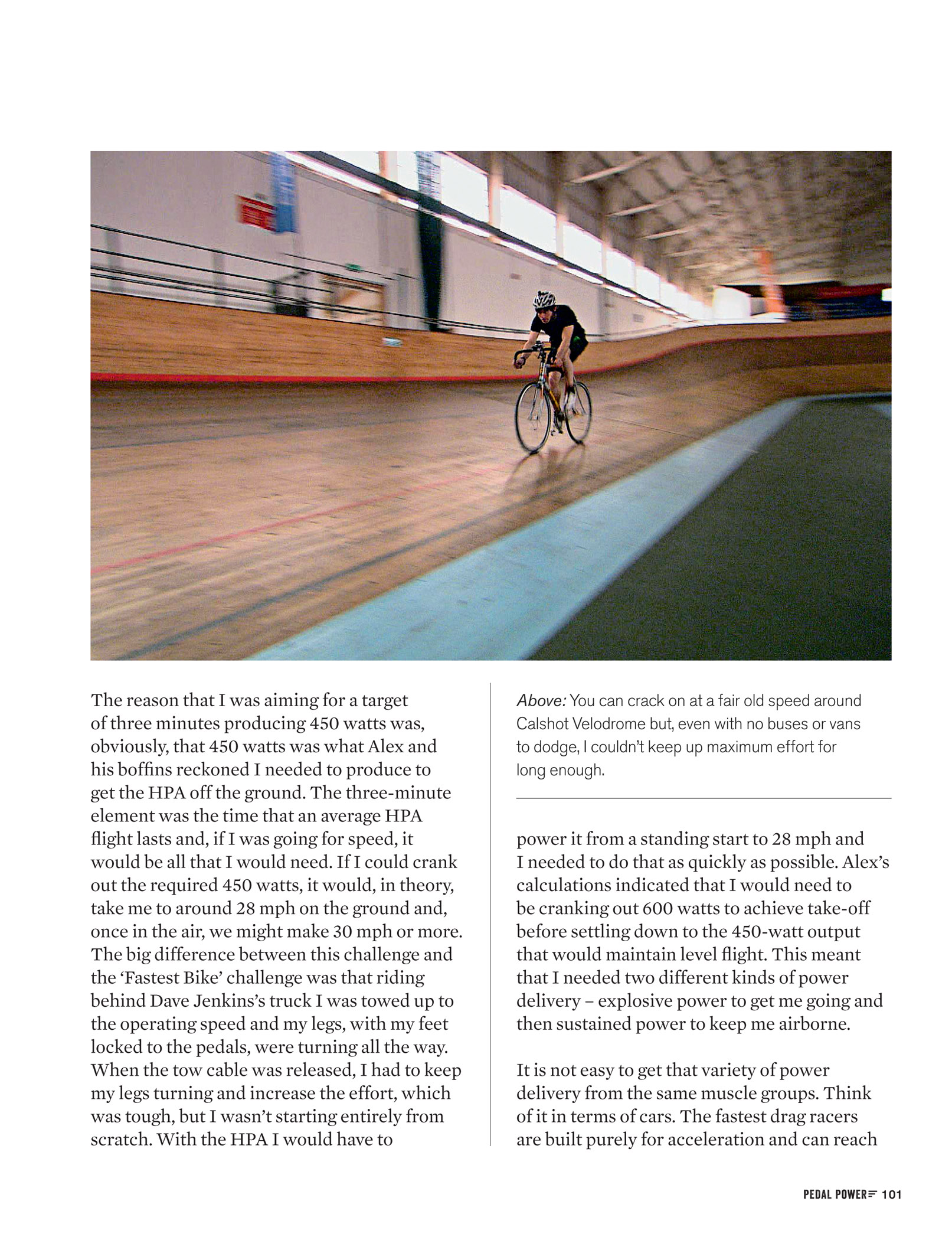
The reason that I was aiming for a target
of three minutes producing 450 watts was,
obviously, that 450 watts was what Alex and
his boffins reckoned I needed to produce to
get the HPA off the ground. The three-minute
element was the time that an average HPA
flight lasts and, if I was going for speed, it
would be all that I would need. If I could crank
out the required 450 watts, it would, in theory,
take me to around 28 mph on the ground and,
once in the air, we might make 30 mph or more.
The big difference between this challenge and
the ‘Fastest Bike’ challenge was that riding
behind Dave Jenkins’s truck I was towed up to
the operating speed and my legs, with my feet
locked to the pedals, were turning all the way.
When the tow cable was released, I had to keep
my legs turning and increase the effort, which
was tough, but I wasn’t starting entirely from
scratch. With the HPA I would have to
Above: You can crack on at a fair old speed around
Calshot Velodrome but, even with no buses or vans
to dodge, I couldn’t Keep up maximum effort for
long enough.
power it from a standing start to 28 mph and
I needed to do that as quickly as possible. Alex’s
calculations indicated that I would need to
be cranking out 600 watts to achieve take-off
before settling down to the 450-watt output
that would maintain level flight. This meant
that I needed two different kinds of power
delivery – explosive power to get me going and
then sustained power to keep me airborne.
It is not easy to get that variety of power
delivery from the same muscle groups. Think
of it in terms of cars. The fastest drag racers
are built purely for acceleration and can reach
PEDAL POWER 101